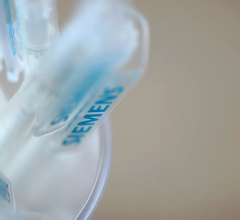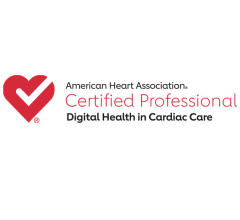
Pass-through status and new CPT codes are expectred to boost usage of contrast-enhanced ultrasound procedures. The individuals who appear are for illustrative purposes only. All persons depicted are models and not real patients or healthcare professionals.
As part of the Consolidated Appropriations Act of 2018, pass-through payment status for LUMASON® (sulfur hexafluoride lipid-type A microspheres) for injectable suspension, for intravenous use or intravesical use has been extended for an additional two years. This extension became effective Oct. 1, 2018 and will remain in effect through Sept. 30, 2020. During this period, hospital-based outpatient facilities will receive separate payment for using LUMASON ultrasound contrast agent during cardiac and radiology contrast-enhanced ultrasound (CEUS) procedures. Instead of packaging the cost into associated procedures, LUMASON use will be reimbursed separately under the hospital outpatient prospective payment system (HOPPS) for their Medicare Fee for Service Patients using Healthcare Common Procedure Coding System (HCPCS) code Q9950.
Ultrasound contrast or enhancing agents assist sonographers in obtaining images for physicians to help them make a diagnosis. The availability of pass-through reimbursement for LUMASON ultrasound contrast agent gives healthcare providers a significant opportunity to provide important patient information while receiving the pass-through reimbursement to offset the associated costs.
LUMASON, internationally distributed as SonoVue®, is the first and only ultrasound enhancing agent to receive U.S. Food and Drug Administration (FDA) approval for three indications: in echocardiography to opacify the left ventricular chamber and to improve the delineation of the left ventricular endocardial border in adult patients with suboptimal echocardiograms; in ultrasonography of the liver for the characterization of focal liver lesions in adult and pediatric patients; in ultrasonography of the urinary tract for the evaluation of suspected or known vesicoureteral reflux in pediatric patients.
What Is “Pass-Through Payment Status” and Why Does It Matter?
Section 1833(t)(6) of the Social Security Act provides for temporary additional reimbursement or “transitional pass-through payments” to cover the additional costs of certain innovative devices, drugs and biologicals. For a drug, device or biological to be eligible for pass-through payments, the Centers for Medicare and Medicaid Services (CMS) must determine that it provides substantial clinical benefit compared with current alternatives and that its cost is “not insignificant” in relation to the HOPPS payment for the procedures or services associated with its use. By design, pass-through status is temporary lasting a minimum of two years and a maximum of three years. During the pass-through period, average sales price (ASP) data are tracked to assist in determining future payment packaging decisions. When pass-through status expires, charges for the device, drug or biological are packaged into the corresponding procedures’ payment rate.
The pass-through provision was implemented to provide Medicare patients with access to novel therapies and to encourage their incorporation into clinical practice by countering financial disincentives for their use. Because CMS payment rates are based on claims that predate newly introduced products, the costs of those products are not reflected in existing reimbursement. It may take years for those costs to be reflected in procedure reimbursement. As a result, healthcare providers who use these innovative products do so at a financial loss, potentially discouraging utilization. By providing additional payments for a limited period of time, the pass-through mechanism offsets the increased costs of novel products so that they can be incorporated into clinical practice. In addition, there is no copayment for Medicare patients when LUMASON is used in the hospital outpatient department setting during the pass-through period and physician fees are not affected by pass-through payments.
LUMASON Pass-through Reimbursement: Q9950
LUMASON pass-through payments are based on the number of milliliters (mLs) billed, both used and discarded. As of April 1, 2019, the value of the pass-through payment is $19.97 per mL and equivalent to $99.86/vial. Pass-through payment amounts are updated quarterly and published on the CMS’ website at: https://www.cms.gov/Medicare/Medicare-Fee-for-Service-Payment/HospitalOutpatientPPS/Addendum-A-and-Addendum-B-Updates.html. It is important to note this additional reimbursement only applies to LUMASON; no other ultrasound contrast agent has CMS pass-through status. Because contrast agent payments are currently packaged with the procedure payment for echocardiograms, the pass-through payment for LUMASON ultrasound contrast agent is reduced by an “offset” for cardiac procedures to avoid duplicate payment for the agent. This offset does not apply for non-cardiac procedures.
Clinical Applications
“In the United States, of the 3.8 million Medicare outpatient echocardiography procedures, nearly 20 percent will be sub-optimal, meaning that the study is inconclusive and could benefit from using an enhancing agent,” said Steven B. Feinstein, M.D., a professor of medicine at Rush University Medical Center in Chicago and co-president of the International Contrast Ultrasound Society (ICUS). In this scenario, over 750,00 patients that receive ultrasound contrast could receive the LUMASON pass-through payment.
Typically, a hospital outpatient setting will have a combination of study types. For instance, heart failure patients may require limited studies on a regular basis to evaluate an left ventricular assist device (LVAD) placement. An inconclusive echo study performed in a physician’s office may require a limited study in the hospital outpatient setting because the physician has ordered contrast to be used. In both of these echocardiography examples, the pass-through code with the off-set applied provides an additional $53.13 compared to the same procedures using an agent without a pass-through code.
New Reimbursement Codes for Non-cardiac CEUS Procedures
Two new CPT codes for radiology applications—ultrasound, targeted dynamic microbubble for sonographic contrast characterization (non-cardiac); initial lesion (76978) and a code for each additional lesion with separate injection (76979)—were introduced Jan. 1, 2019. Radiologists have been waiting eagerly for dedicated CPT codes to report CEUS procedures. Lack of appropriate CPT coding has been a barrier to broader adoption of CEUS in the United States. It is believed this new coding will provide a tangible path forward to expand utilization of CEUS where medically appropriate. There is no offset for pass-through payments for LUMASON ultrasound contrast agent use in non-cardiac procedures, i.e., radiology. In fact, ultrasound codes are not limited to abdominal or liver lesions.
LUMASON is the only ultrasound contrast agent that is FDA-approved for characterization of focal liver lesions. Richard Barr, M.D., professor of radiology at Northeastern Ohio Medical University, stated: “For over the last 10 years, we have been performing CEUS examinations. We had to limit the number of exams performed to the most needy due to lack of reimbursement. For select patients, CEUS can make a marked impact on patient care, particularly in those with renal insufficiency. With the addition of the new CPT code and pass-through status for LUMASON ultrasound contrast agent, we can now offer CEUS to more patients who can benefit from the improved sensitivity and specificity over other imaging modalities. The addition of CEUS to our imaging tool box will substantially improve the care we can provide to our patients.”
Opportunity to Update Chargemaster
A senior healthcare consultant at Panacea, Donna Richmond, BA, RCC, CIRCC, CPC, has stated: “We often find hospitals do not report drugs or supplies that should be reported. If the ultrasound contrast agent administered is LUMASON, the facility will be losing out on additional payment for the contrast material. Because most drugs are considered packaged and not paid separately under HOPPS, many hospitals just never check to look for the codes that are separately paid. Chargemasters are not updated yearly in many cases, so these payments are lost.”
When asked what hospitals should do to address this problem, Richmond stated: “First, make sure the chargemaster is updated, checking the HOPPS Final Rule and Addendum B for those drugs that are separately paid. Second, make sure your billing system does not cause an edit to ‘kick out’ drug codes. In addition, since the cost of packaging drugs are used for outlier payments and future rate setting, all drugs should be reported on the outpatient claim form, whether paid separately or not.”
Modernizing Medicine in the Value-based Care Model
According to Dr. Feinstein, “Outdated scope of practice and institutional policies can limit the use of contrast and reduce patient access to this extremely reliable, inexpensive, safe and radiation-free option for imaging the heart, liver, kidneys and other organs and tumors throughout the body.”
Feinstein said that “the important benefits of CEUS were highlighted in a 2009 prospective study by Kurt et. al., which showed that CEUS decreased uninterpretable studies from 11.7 percent to 0.3 percent, while decreasing technically difficult studies from 86.7 percent to 9.8 percent. In addition, CEUS changed therapeutic decisions in 10.4 percent of patients resulting in additional downstream procedures being avoided and therapy changed in 35.6 percent of patients.”
Feinstein emphasized that “without access to CEUS, many patients are misdiagnosed or sent for alternative imaging that may not be as patient-friendly. For example, when a 42-year-old woman comes into the ED on a weekend and needs a stress test based on her presenting story of chest pain, frequently she receives a nuclear imaging scan, which uses a radioactive material as a tracer,” he stated. “And it is known that radiation is cumulative and increases her lifetime risk of cancer. Perhaps the option of a stress echo ought to be part of ED protocols. At a minimum, a patient may wish to have the opportunity to make an informed choice for diagnostic testing.”
“In addition, many of our patients are large and may exceed the limits for computed tomography (CT), magnetic resonance imaging (MRI), single-photon emission CT (SPECT) and positron emission tomography (PET),” he continued. “These patients are well-served using CEUS agents because it’s often difficult to visualize deeply within the body.”
Feinstein also stressed the practical economic value of CEUS for patients and the healthcare system. He noted that “CEUS can reduce the need for more expensive downstream testing and redundant testing, as well as reduce delays and speed up the time to diagnosis and therapy. CEUS imaging represents an excellent option for patients as it may improve their care and experience while improving hospital workflows.”
To learn more about reimbursement, visit the ICUS website at http://icus-society.org/wp-content/uploads/2018/12/2019-CEUS-coding-payment-chart.pdf.
Conclusion
The extension of CMS pass-through status for LUMASON ultrasound contrast agent represents a unique opportunity for healthcare providers where they can improve patients’ image quality during echocardiography by increasing access to ultrasound contrast while receiving additional reimbursement for doing so. Given the LUMASON pass-through code availability through September 2020, the timing for broader utilization of CEUS has never been better.
Did you miss this COMPLIMENTARY educational webcast?
2019 Update and Review: LUMASON® Ultrasound Contrast Agent
Presented by: Donna Richmond, BA, RCC, CIRCC, CPC
Senior Healthcare Consultant, Panacea – A Career Step Company
Highlights of this seminar include:
• Learn the new CPT codes relating to contrast-enhanced ultrasound in radiology
• Review clinical indications for use of LUMASON in echocardiography and radiology
• Understand appropriate coding for each clinical indication
• Find coverage information for contrast-enhanced ultrasound
• Review Medicare reimbursement for these ultrasound exams
When: Now available on demand – listen at your convenience
Why: Get practical, up-to-date information from Panacea Healthcare’s Radiology Coding expert
Register & listen: http://eventcallregistration.com/reg/index.jsp?cid=80416t11
After registering, you will receive an email containing a unique PIN number
and a link to view the webcast.
If you have questions after the webinar, write or call the Reimbursement Hotline at:
[email protected] or 1-800-349-1388.
This is a paid case study from Bracco Diagnostics Inc. All trademarks and registered trademarks are the property of their respective owners.
Indications for Use and Safety Information:
LUMASON® (sulfur hexafluoride lipid-type A microspheres) for injectable suspension, for intravenous use or intravesical use
INDICATIONS AND USAGE1
LUMASON is an ultrasound contrast agent indicated for use:
in echocardiography to opacify the left ventricular chamber and to improve the delineation of the left ventricular endocardial border in adult patients with suboptimal echocardiograms
in ultrasonography of the liver for characterization of focal liver lesions in adult and pediatric patients
in ultrasonography of the urinary tract for the evaluation of suspected or known vesicoureteral reflux in pediatric patients
CONTRAINDICATIONS1
LUMASON is contraindicated in patients with:
history of hypersensitivity reactions to sulfur hexafluoride lipid microsphere components or to any of the inactive ingredients in LUMASON
IMPORTANT SAFETY INFORMATION1
WARNING: SERIOUS CARDIOPULMONARY REACTIONS
Serious cardiopulmonary reactions, including fatalities, have occurred uncommonly during or following the injection of ultrasound contrast agents, including sulfur hexafluoride lipid microspheres [see Warnings and Precautions (5.1)]. Most serious reactions occur within 30 minutes of administration [see Warnings and Precautions (5.1)].
Assess all patients for the presence of any condition that precludes administration [see Contraindications (4)].
Always have resuscitation equipment and trained personnel readily available [see Warnings and Precautions (5.1)].
The risk for serious cardiopulmonary reactions may be increased among patients with unstable cardiopulmonary conditions (acute myocardial infarction, acute coronary artery syndromes, worsening or unstable congestive heart failure, or serious ventricular arrhythmias) [see Warnings and Precautions (5.1)].1
Please see full Prescribing Information for LUMASON ultrasound contrast agent including boxed WARNING at http://www.braccoimaging.com/us-en/products-and-solutions/contrast-enhanced-ultrasound/lumason/prescribing-information.
You are encouraged to report negative side effects of prescription drugs to the FDA. Visit
https://www.fda.gov/Safety/MedWatch/default.htm or call 1-800-FDA-1088.
LUMASON is manufactured for Bracco Diagnostics Inc., Monroe Township, NJ 08831, by Bracco Suisse S.A., Plan-les-Ouates Geneve, Switzerland (LUMASON lyophilized powder vial-25 mg lipid-type A/60.7 sulfur hexafluoride gas); Vetter Pharma-Fertigung GmbH & Co. KG, 88212 Ravensburg, Germany (Sodium Chloride 0.9% Injection, USP); B. Braun Melsungen AG, 34212 Melsungen, Germany (Mini-Spike).
LUMASON and SONOVUE are registered trademarks of Bracco Diagnostics Inc. and its affiliated entities.
DISCLAIMERS
The information provided here is general reimbursement information for LUMASON. It is not legal advice, nor is it advice about how to code, complete, or submit any particular claim for payment. Although we supply this information based on our current knowledge, it is always the provider’s responsibility to determine and submit appropriate codes, charges, modifiers, and bills for the services that were rendered. This coding and reimbursement information is subject to change without notice. Payers or their local branches may have their own coding and reimbursement requirements and policies. Before filing any claims, providers should verify current requirements and policies with the payer.
CPT® Copyright 2018 American Medical Association (AMA). All rights reserved. Fee schedules, relative value units, conversion factors, and/or related components are not assigned by the AMA, are not part of CPT, and the AMA is not recommending their use. The AMA does not directly or indirectly practice medicine or dispense medical services. The AMA assumes no liability for data contained or not contained herein.
CPT is a registered trademark of the American Medical Association.
1 LUMASON (sulfur hexafluoride lipid-type A microspheres) for injectable suspension, for intravenous use or intravesical use, Full Prescribing Information. Monroe Twp., NJ: Bracco Diagnostics Inc.; December 2016.
Bracco Diagnostics, Inc.
259 Prospect Plains Rd., Building H
Monroe Township, NJ 08831 USA
Phone: 1-609-514-2200
Toll-Free: 1-877-272-2269 (U.S. only)
Fax: 1-609-514-2446


 November 14, 2025
November 14, 2025 









